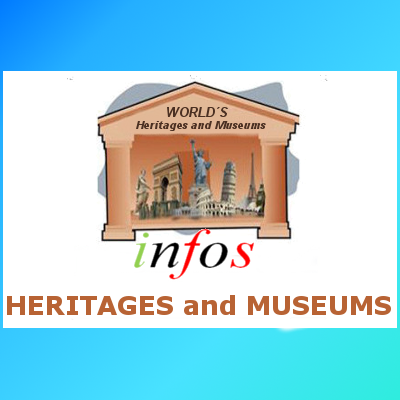What You Need To Know
Soweto is an urban area of the city of Johannesburg in Gauteng, South Africa, bordering the city’s mining belt in the south. Its name is an English syllabic abbreviation for South Western Townships.
Area: 57.92 mi²
Population: 904,165
The history of South African townships south west of Johannesburg that would later form Soweto was propelled by the increasing eviction of black South Africans by city and state authorities. Black South Africans had been drawn to work on the gold mines that were established after 1886. From the start they were accommodated in separate areas on the outskirts of Johannesburg, such as Brickfields (Newtown). In 1904 British-controlled city authorities removed black South African and Indian residents of Brickfields to an “evacuation camp” at Klipspruit municipal sewage farm (not Kliptown, a separate township) outside the Johannesburg municipal boundary, following a reported outbreak of plague. Two further townships were laid out to the east and the west of Johannesburg in 1918. Townships to the south west of Johannesburg followed, starting with Pimville in 1934 (a renamed part of Klipspruit) and Orlando in 1935.
Soweto came to the world’s attention on 16 June 1976 with the Soweto Uprising, when mass protests erupted over the government’s policy to enforce education in Afrikaans rather than their native language. Police opened fire in Orlando West on 10,000[12] students marching from Naledi High School to Orlando Stadium. The rioting continued and 23 people died on the first day in Soweto, 21 of whom were black, including the minor Hector Pieterson, as well as two white people, including Melville Edelstein, a lifelong humanitarian.
The impact of the Soweto protests reverberated through the country and across the world. In their aftermath, economic and cultural sanctions were introduced from abroad. Political activists left the country to train for guerrilla resistance. Soweto and other townships became the stage for violent state repression. Since 1991 this date and the schoolchildren have been commemorated by the International Day of the African Child.
Currency

- The rand (sign: R; code: ZAR) is the currency of South Africa. The rand has the symbol “R” and is subdivided into 100 cents, symbol “c”. Unlike the dollar, the decimal separator between a rand and cent is expressed by a comma.
- Denominations of Euro coins are R5, R2, R1, 50c, 20c, 10c, 5c
- Euro banknotes are issued in R200, R100, R50, R20, R10 notes.
- It’s better for one to carry some cash when visiting soweto as some local places may not accept credit cards.
Weather
The climate of soweto is dry and sunny all over the year. You can visit soweto in both the winter and summer seasons as the winter months are mild and the summer months are very moderate. However, the months between September and April are the best time for holiday trips to Johannesburg.
Language
There are eleven official languages of South Africa: Afrikaans, English, Ndebele, Northern Sotho, Sotho, Swazi, Tsonga, Tswana, Venda, Xhosa and Zulu. Fewer than two percent of South Africans speak a first language other than an official one. Most South Africans can speak more than one language. Dutch and English were the first official languages of South Africa from 1910 to 1925. Afrikaans was added as a part of Dutch in 1925, although in practice, Afrikaans effectively replaced Dutch, which fell into disuse. When South Africa became a republic in 1961 the official relationship changed such that Afrikaans was considered to include Dutch,and Dutch was dropped in 1984, so between 1984 and 1994, South Africa had two official languages: English and Afrikaans.[3]
Health and security
- Soweto is served by the famous and enormous Baragwanath/Chris Hani hospital and its 19 satellite clinics. There are also a few private clinics. Bara as it is known is regarded as the largest hospital in Africa and the southern hemisphere.
- Within the townships, the communities face many troubling issues. Most often the homes are built on lands that are not owned by the occupier so it is there illegally. Since the houses are not there with the government’s permission they most likely do not have the proper services needed. Without the proper services, such as sewage, electricity, roads, and clean water, life becomes very difficult for them. The many South African townships are run individually, but they also face similar problems.
- Crime is a prominent issue in Soweto. South Africa has a very high rate of murders, assaults, rapes (adult, child, elderly and infant), and other crimes compared to most countries. Most emigrants from South Africa state that crime was a big factor in their decision to leave.
- Soweto also has a high record of car hijackings
DON’T
- If you do the Soweto tour, I suggest you do it during the week. The tour guides are really good but the problem is that if there are too many people, they will organise two small vans and if you’re lucky, the tour guide sits in the same van with you.
- If you’ve rented a car to get around Soweto or to drive around johannesburg, the best advice is to keep your car doors locked at all times – even when you’re inside the car and driving around. Car theft is a problem in Soweto, which may be reason enough to skip driving altogether and hire a guide in Johannesburg. It’s also not uncommon for thieves to smash car windows to grab whatever’s on the seat – even if you’re in the car at the time. So keep your purses and cell phones out of sight.
DO
- Visit Nelson Mandela’s humble house in Orlando West, Soweto, also called the Mandela Family Museum. This interesting museum brings to life the history on the world’s most famous former prisoner. The four-roomed house contains an assortment of memorabilia, paintings and photographs of the Mandela family as well as a collection of honorary.
- the disused Orlando cooling towers has been converted into a vertical adventure facility and tourist attraction for adrenalin junkies. Aimed at drawing local Gauteng adventure enthusiasts, as well as adventure tourists, the site has become one of the most popular attractions in Gauteng












